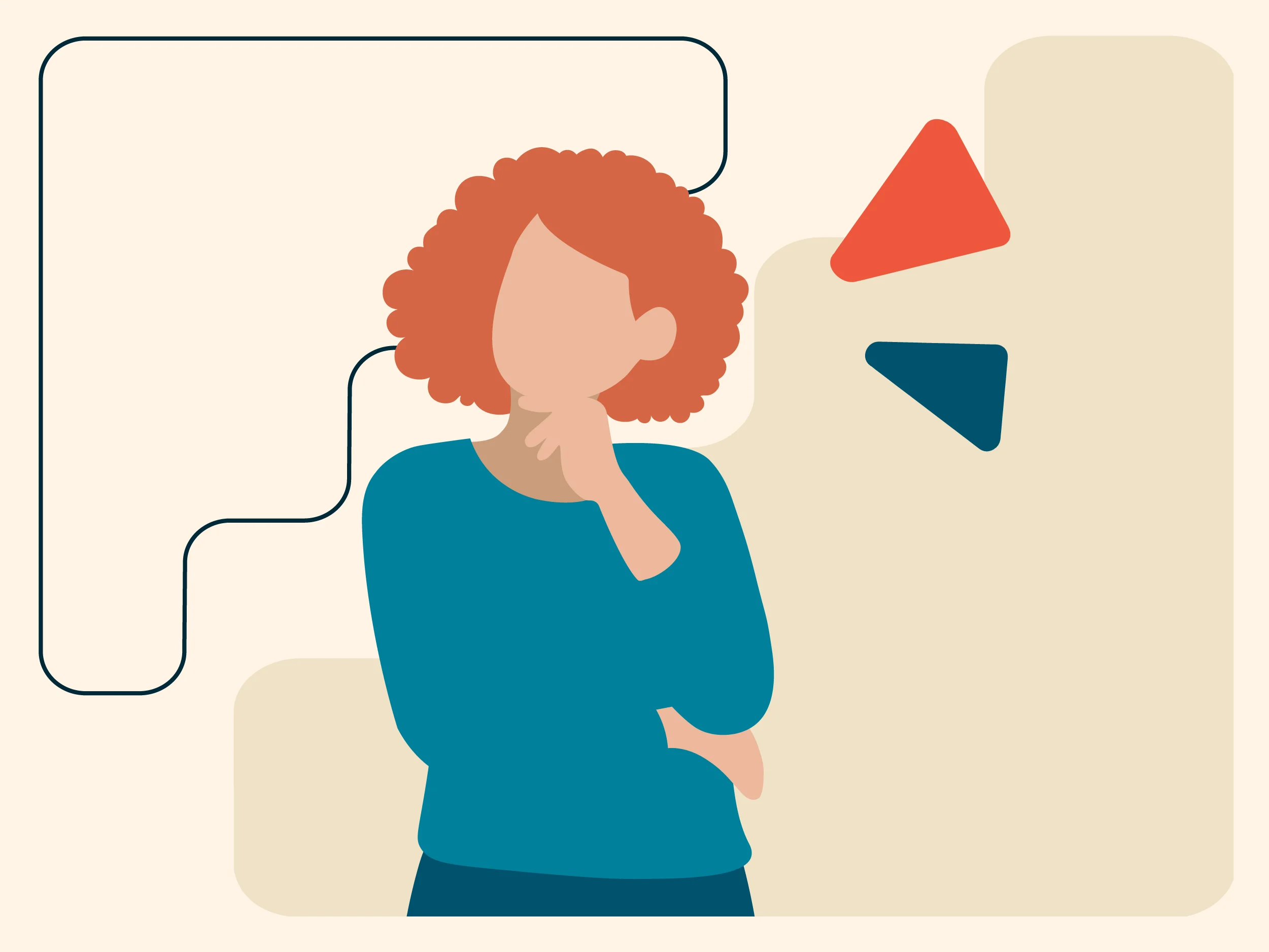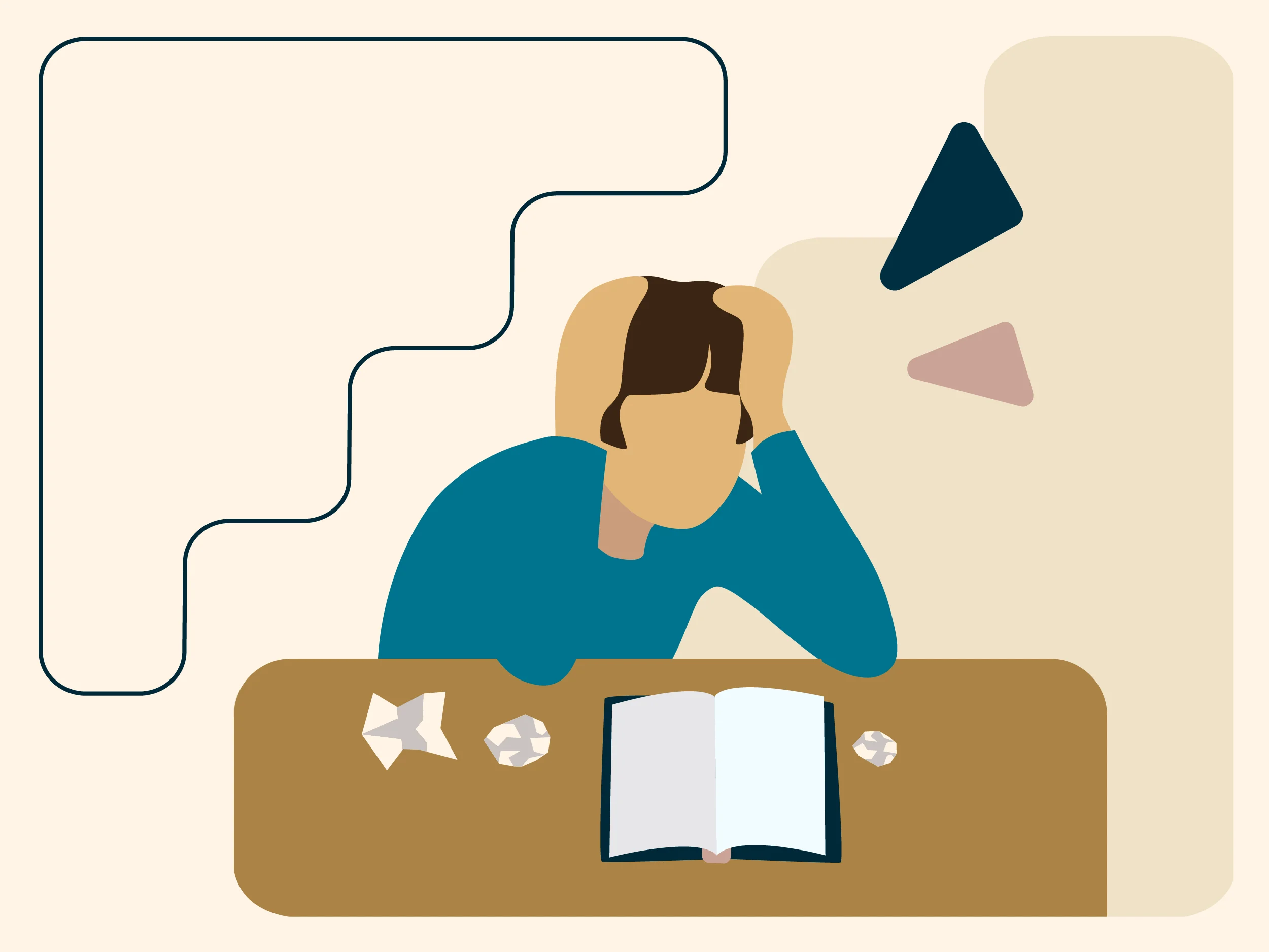IEPs: Setting IEP goals
Watch the episode, listen to the audio, or read the transcript.
Stay in the know
All our latest podcasts delivered right to your inbox.
Setting IEP goals can feel tricky. They should be attainable, but not too hard or too easy — it's a bit like Goldilocks and the Three Bears.
However, setting these goals is a big part of developing your child’s IEP, or Individualized Education Program.
In this episode of Understood Explains, host Juliana Urtubey breaks down how IEP teams set annual goals, how parents can help, and how the IEP will measure a child’s progress.
Timestamps
[0:44] How do IEP teams set annual goals?
[4:22] How can parents help set annual goals?
[7:01] Are my child’s IEP goals aiming high enough?
[8:24] How will the IEP measure my child’s progress?
[11:30] What do multilingual families need to know?
[12:31] Key takeaways
Related resources
Episode transcript
Juliana: A big part of developing your child's IEP is setting annual goals. But how can you tell if these goals are aiming high enough and if your child is getting enough support to reach these goals?
From the Understood Podcast Network, this is "Understood Explains IEPs." On this episode, we're going to talk about how to help set IEP goals and measure your child's progress throughout the year. My name is Juliana Urtubey and I'm your host. I'm the 2021 National Teacher of the Year, and I'm an expert in special education for multilingual learners. And as a reminder, all this season's episodes are available in English y en español. OK, let's get started.
[0:44] How do IEP teams set annual goals?
How do IEP teams set annual goals? Each year, you and the school will work as a team to develop your child's IEP or Individualized Education Program. As a team, you'll prioritize which skills your child will work on over the next 12 months. These are the annual goals, and the IEP also provides specially designed instruction or SDIs to help your child meet these goals.
I like to think of IEP goals as a staircase. Each step is one of your child's, strengths and we go step by step, floor by floor, until your child catches up with their peers.
And there's a whole team of people who develop these goals. The IEP team includes a special education teacher, a general education teacher, and a school psychologist, or some other type of expert who can interpret your child's progress data. As a parent or guardian, you're a member of the IEP team too, and together you'll talk about three key things that go into setting each goal.
The first is looking at your child's present level of performance. The team needs to know what your child can do right now. This includes looking at academics as well as social and emotional skills. And a quick vocab note: As the team talks about your child's present levels of performance, you may hear acronyms like PLOP or PLP, or you may hear PLAAFP, which is short for Present Level of Academic Achievement and Functional Performance.
And here's the reason why goal setting starts by looking at your child's present levels. For every need that gets identified now, there should be a plan to address it.
OK, so that brings us to the second key part, which is setting the annual goal or target to reach a year from now. The team will set annual goals that are ambitious but attainable. We want to aim high but also be realistic. And this is where special educators like me do something called backwards planning. We look at where we want your child's skills to be a year from now, and then we plan out all the steps we need to take to help your child reach those goals in this time frame.
And that leads us to the third big part of setting IEP goals, which is specifying benchmarks or short-term objectives. These are the smaller steps that will help the team measure your child's progress over the course of the year.
We're going to talk more about how to help set these annual goals or targets, and also how to track your child's progress. But before we do that, I want to remind you that IEPs are about setting goals and providing supports. The IEP team knows how to help kids make progress without overwhelming them. And here's an example.
Let's say you have a fifth grader who has dyslexia. We'll call her Ariana. Ariana's reading skills are several grade levels behind where they need to be. The team will set goals for which skills to improve, like reading smoothly and accurately. The IEP will specify how much-specialized instruction Ariana will get to help make progress in these areas.
Let's say the team decides she'll meet with a reading specialist for one hour, twice a week. But the IEP will also specify what assistive technology she'll get, like audiobooks, so she can keep up with her classmates in things like science and social studies. And the IEP will include accommodations, too, like getting extra time on tests or giving oral reports instead of writing out her answers. These kinds of supports will help Ariana keep learning fifth-grade materials as she works on meeting her IEP goals.
[4:22] How can parents help set annual goals?
So, how can parents help set annual goals? It's OK if you're not an expert in education. You're an expert in your child. You're also an equal member of the IEP team and here are some of the ways that you can help set the annual goals.
First, you can suggest different kinds of goals. Academics are important, but so is getting organized, managing emotions, replacing negative behaviors. These are all common goal areas in IEPs. Remember that IEPs are individualized. So, you can advocate for whatever it is you think your child needs. I once had a student who was afraid of climbing stairs. So, we set an IEP goal about practicing using the stairs to get from one class to another.
As you're thinking about which goals to prioritize, I want to be clear that there is no maximum number of goals in an IEP. But the trick is finding the right number of goals for your child. You want a number that's manageable and not overwhelming.
Another thing you can do is ask how you can help at home. Should I be reading to Ariana? How can I set up a homework area to help her get her work done? What do I do if neither of us understands the directions for her homework? You and the school can also look for ways to help your child enjoy what they're learning. To try to keep it fun and feeling like these goals are reachable.
Another way you can help is by asking about SMART goals. Now, SMART is an acronym for Specific, Measurable, Attainable, Results-oriented, and Time-Bound. Setting SMART goals can help the team avoid using vague or hard-to-measure goals. Smart goals are very precise. For example, here's a SMART goal for reading fluency: By June 1st, Ariana will read 115 words per minute with 95% accuracy on four out of five tries.
The goal can include other details too, like the grade level of the text she's reading, and maybe also the type of text like fiction or nonfiction. And remember that the IEP will include the present level of performance. So, it will say what Ariana's starting point is, like 80 words per minute with 85% accuracy. So, the IEP will show exactly how much progress the team is aiming for in a year.
You can help by using the SMART acronym to ask questions like "Is this goal specific enough? Is it measurable?" etc. If you want to learn more, I'll put a link in the show notes to an Understood article that shows the difference between a SMART goal and a not-so-SMART goal.
[7:01] Are my child's IEP goals aiming high enough?
Are my child's IEP goals aiming high enough? So, this is a really tough question. In the SMART acronym that we just talked about, the A stands for Attainable. But writing attainable goals can feel a little like Goldilocks and the Three Bears. It can be tricky to make the goals not too easy, not too hard, but just right.
So, there are two things that I want you to keep in mind when it comes to setting goals that are aiming high enough but are attainable. First, your child's IEP goals must be tied to the standards of their current grade level. Think back to Ariana, our fifth grader. Even though her reading fluency is a few grade levels behind, her IEP goals need to be tied to fifth-grade standards.
Schools want kids to stay connected to what their peers are learning, and ultimately to stay on track to graduate. But the second thing I want you to know is that there's still some flexibility here. Just because Ariana's IEP goals are tied to fifth-grade standards doesn't mean she has to achieve grade-level reading this year. She just needs to show steady progress towards achieving grade level.
Understood has a good article about standards-based IEPs. I'll put a link in the show notes and in the next section we're going to talk about what you can do if you think your child is not making enough progress.
[8:24] How will the IEP measure my child's progress?
So, how will the IEP measure my child's progress? At the beginning of this episode, I mentioned that annual goals need to do three key things: Look at your child's current skill levels, set goals or targets to reach a year from now, and include short-term objectives or benchmarks to monitor your child's progress.
I want to focus on the last part now. You may hear the school use different terms for this, like benchmarking and progress monitoring. Benchmarks are many goals or milestones that can help the team measure how much progress the student is making towards reaching the annual goal.
Some states may require a certain number of benchmarks for each goal. For example, I taught Nevada for many years, which required three benchmarks or milestones for each goal. As a parent, you can ask the team about the benchmarks in the IEP. You can also ask for the IEP to include how often you'll receive progress updates.
For my students, I would send out IEP progress reports so that they would arrive at the same time as quarterly report cards. I timed it this way so families could look at their child's grades and general education, and at the same time see the growth their child was making on their special education goals.
OK, so we've talked about setting goals and using benchmarks to help monitor your child's progress. Now let's look at Ariana again.
Earlier in the episode we talked about a SMART goal for reading fluency. It said that by June 1st, Ariana will read 115 words per minute with 95% accuracy on four out of five tries. As part of setting this goal, we need to come up with benchmarks to hit along the way. The benchmarks could be reaching 85 words per minute by December 1st and 100 words per minute by March 1st. And these are building up to reach that June 1st goal of reading 115 words per minute.
OK, so let's say it's March 1st and Ariana is still far below that 100-word benchmark. The team may want to meet and talk about options. Like whether to adjust the goal or possibly add more services or supports, like maybe a third session each week with the reading specialist.
But remember, the team is looking for ways to support your child without overwhelming your child. You can always reach out to the special education teacher or case manager to ask about your child's progress. It's good to be in touch with them on a regular basis. But you also have the right to request an IEP meeting and suggest things like more goals or services.
The team doesn't have to say yes to your request, but it does have to explain in writing why it thinks the current plan is sufficient. And if you disagree with the school's decision, we've got a whole episode about that later this season.
But for now, I want to encourage you to use Understood's IEP goal tracker. This is a good template for keeping track of benchmarks or mini goals and other progress monitoring data. And it can help you jot down any questions or observations you have along the way. I'll include a link in the show notes.
[11:30] What do multilingual families need to know about setting IEP goals?
What do multilingual families need to know about setting IEP goals? There are a few quick things I want to mention if your child's learning English. First, if you need a translator at the IEP meeting, the school needs to provide one for you. And the school should translate the IEP for you too. Second, the IEP should be clear on how much time your child will spend getting special education services. It will also specify how much time your child will spend getting language acquisition services. Special education and language acquisition aren't the same thing. The team should explain to you what a typical school day will look like for your child.
And last but not least, you can ask the school to provide specially designed instruction in your child's home language. This might not be possible, but it's good to ask. It's also good for your child to keep learning in more than one language.
OK, before we go, let's wrap up with a few key takeaways.
[12:31] Key takeaways
IEP goals are created using three key components: Looking at how your child is performing in school now, setting goals to reach a year from now, and specifying smaller steps towards reaching those goals. IEP goals should be SMART, specific, measurable, attainable, results-oriented, and time-bound. And there's no limit on the number or type of goals that should be in an IEP. It all depends on what your child needs.
All right! That's it for this episode of "Understood Explains." Next time, we're diving deep into how IEPs can help with behavior.
You've been listening to "Understood Explains IEPs." This season was developed in partnership with UnidosUS, which is the nation's largest Hispanic civil rights and advocacy organization. Gracias, Unidos! If you want to learn more about the topics we covered today, check out the show notes for this episode. We include more resources as well as links to anything we've mentioned in the episode.
Understood is a nonprofit organization dedicated to helping people who learn and think differently discover their potential and thrive. Learn more at understood.org/mission.
Credits
Understood Explains IEPs was produced by Julie Rawe and Cody Nelson, with editing support by Daniella Tello-Garzon.
Video was produced by Calvin Knie and Christoph Manuel, with support from Denver Milord.
Mixing and music by Justin D. Wright.
Ilana Millner was our production director. Margie DeSantis provided editorial support, and Whitney Reynolds was our web producer.
For the Understood Podcast Network, Laura Key is our editorial director, Scott Cocchiere is our creative director, and Seth Melnick is our executive producer.
Special thanks to the team of expert advisors who helped shape this season: Shivohn Garcia, Claudia Rinaldi, and Julian Saavedra.
Host

Juliana Urtubey, NBCT, MA
is the 2021 National Teacher of the Year. As a special educator, she believes all kids have a right to be included and celebrated in what she calls a “joyous and just education.”
Latest episodes
Tell us what interests you
Stay in the know
All our latest podcasts delivered right to your inbox.









